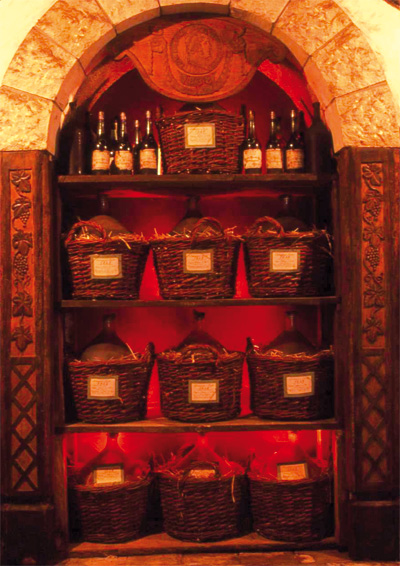Winegrower (Gers) - France
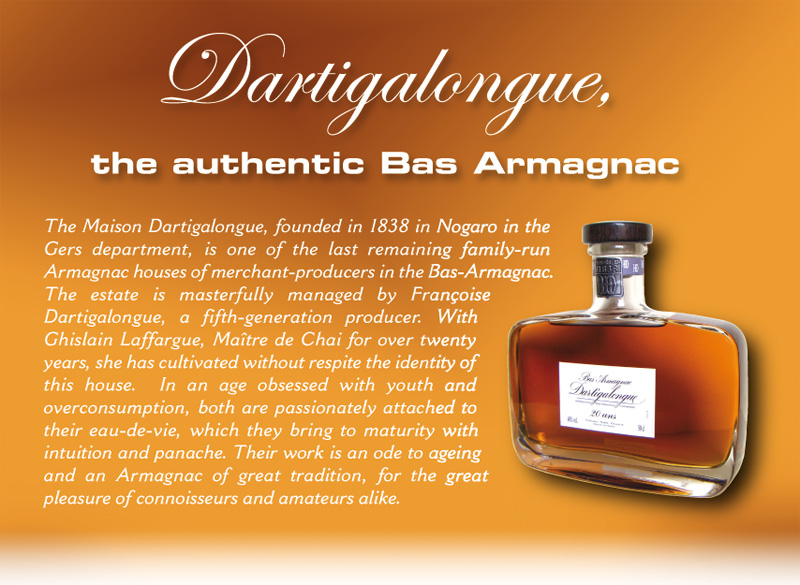
According to Françoise Dartigalongue, "To perceive all of an eau-de-vie's qualities and flaws, it must never be drunk at a high volume of alcohol. Rather, it should be served a few minutes before tasting, to allow it to open and air and release all of its aromas." Ghislain Laffargue adds, "An eau-de-vie must be crafted, monitored, aired and stirred with care and to develop all of its aromas. I'm constantly taking the pipette, filling a glass, smelling, looking, tasting, trying again and comparing with patience, to bring the brandy to 40 or 42% of alcohol per volume. That's the secret of the alchemy between a maître de chai and his Armagnac." To carry out this ageing in the purest tradition, the Maison Dartigalongue has no fewer than three barrel halls, which correspond to three different steps in the maturing process and house nearly 400 oak barrels.
Le Chai des Moules, the barrel hall reserved for young Armagnacs. Following their transfer from the distillery at 70% per volume, they are reduced by some ten degrees before being barreled for 4 to 5 years in this hall. Regularly aired to better release their aromas and for a rounder mouthfeel, these young Armagnacs eventually become impregnated with the oakyness of their barrels. To accelerate the ageing process, the maître de chai plays with the differences in temperature. During the summer, the barrel hall's high temperature, which can reach 45° C, allows the eau-de-vie's "fire" to evaporate. During the winter, the Armagnacs contract with the cold, which seems to accelerate ageing. Finally, every two years, during the spring, the young Armagnacs are pumped into a vat to be reduced a further 2 or 3 degrees, again with the utmost care.
Le Chai du Jardin is the barrel hall of "impregnation". During this stage, the Armagnac is taken down into an earth-floored cellar, yet one more link between the Armagnac and its terroir. For this reason, particular attention is paid to the hygrometric rate, which is indispensable for the imbuing of certain aromas. The presence of mould is essential for the ageing of Armagnac.
That is why the 165 barrels - each perfectly labeled and controlled, no matter the vintage - are regularly repositioned in order to benefit from an ideal hygrometry.
Le Chai de Vieillissement. This upper-floor "Ageing Chai", dating from the 19th century and boasting a magnificent English-style roof structure, houses 110 barrels of ageing Armagnac, as well as numerous demijohns. The walls have been darkened by the "angels' share" escaping from the hundreds of barrels stored here over the years. To step over the threshold of this barrel hall is to enter a timeless universe... Here, the Armagnacs lose a few more degrees of alcohol, take on their deep golden colour tending towards mahogany, and become enriched with the wood's tannins and aromas dissolved in the alcohol. For 10, 20, 30 or more years, they become impregnated with all the wood's aromas: vanilla, candied fruits, plum, etc. The youngest reserve stored here dates from 1989, while the 1960 and 1963 reserves are still in their barrels. The 1959 vintage was just recently transferred to demijohns, to avoid its becoming overly woody. Each vintage has its own delicious history, which Françoise Dartigalongue and Ghislain Laffargue are intimately, sensually familiar with.
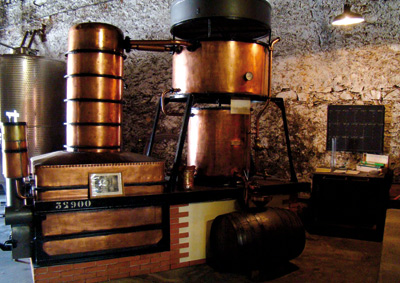
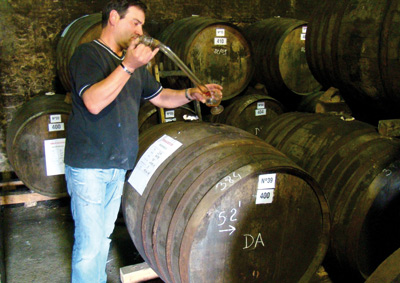
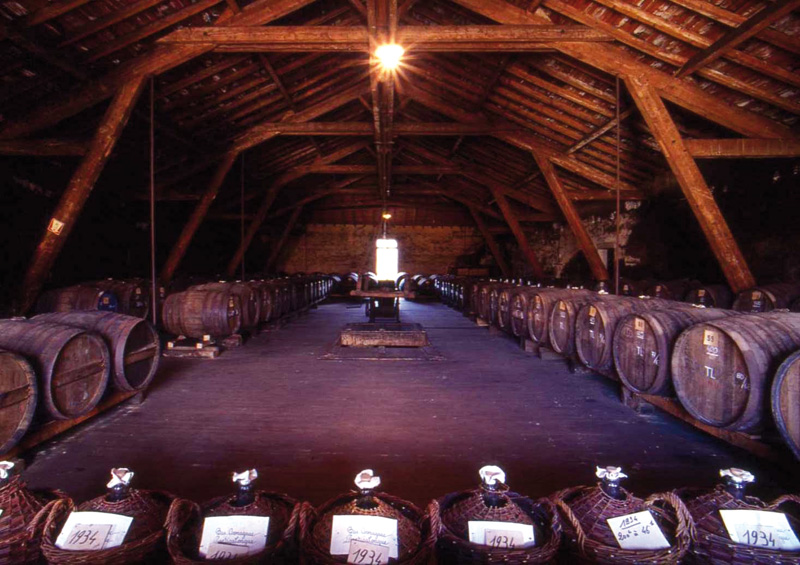
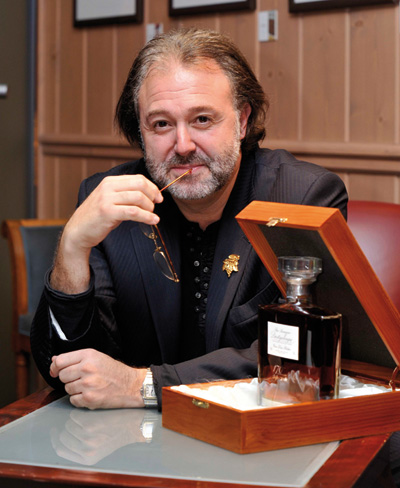
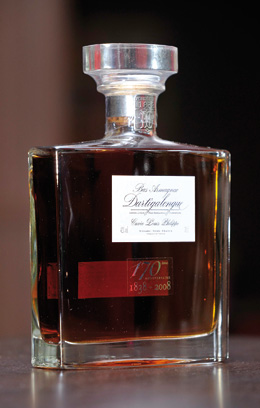 Focus on... the Blends
Focus on... the BlendsFrançoise Dartigalongue and the maître de chai blend several Armagnacs, a great responsibility of which they are proud. Blending is necessary to produce an eau-de-vie that is round and subtle, for an Armagnac that is homogenous over time. This allows you to enjoy blends that are at least 10 (Hors d'Age), 15, 20, 25 or 30 years old, as well as the Louis Philippe vintage created upon the House's 170th anniversary, Philippe Faure-Brac, World’s Best Sommelier 1992, tasted the Cuvée Louis Philippe recently.
If you plan on tasting Dartigalongue Bas Armagnacs, Françoise Dartigalongue and Ghislain Laffargue will lavish you with helpful advice. "If you're looking for an Armagnac to drink primarily as a digestif, the best time to carry out a tasting is in the morning, when your palate is still fresh." They also point out that to enjoy an Armagnac as an aperitif, one should choose a 5-year-old vintage, with an ice cube or some orange juice. 25-year-old Armagnacs are fruitier and generally please women. The 30-year-old vintages are more "masculine", with stronger oak and vanilla aromas. This ever-changing spirit reveals its palette of aromas as it likes, which makes tasting all the more interesting and enjoyable.

Once a glass has been emptied, there always remains a small drop of eau-de-vie, whose alcohol evaporates to leave only the most subtle and rare aromas, which can easily perfume an entire room.
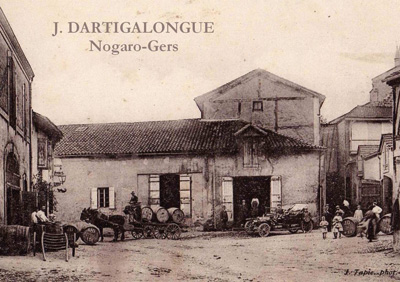
Perhaps you will be lucky enough to visit the estate's "Paradise", the keys to which are held by the lady of the house. In this last room of the museum dedicated to the history of the house, from its foundation in 1838, you will discover such treasures as demijohns of Dartigalongue Bas Armagnac from 1848, 1893 and 1900, not to mention a few dozen bottles dating from 1829, the great-great-great-grandmother's dowry... A veritable journey through time.
Hélène GEISLERBas Armagnac Dartigalongue
B.P. 9 – 32110 NOGARO
Tel: 05 62 09 03 01
Fax: 05 62 09 01 78
